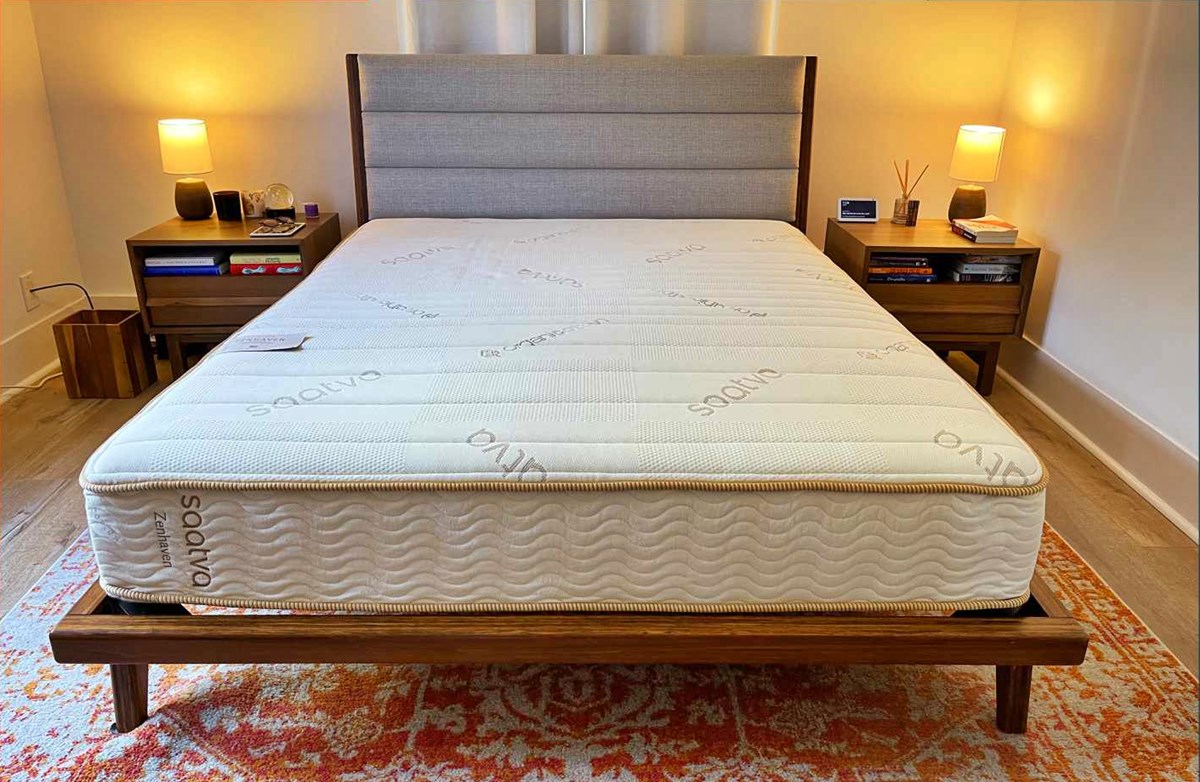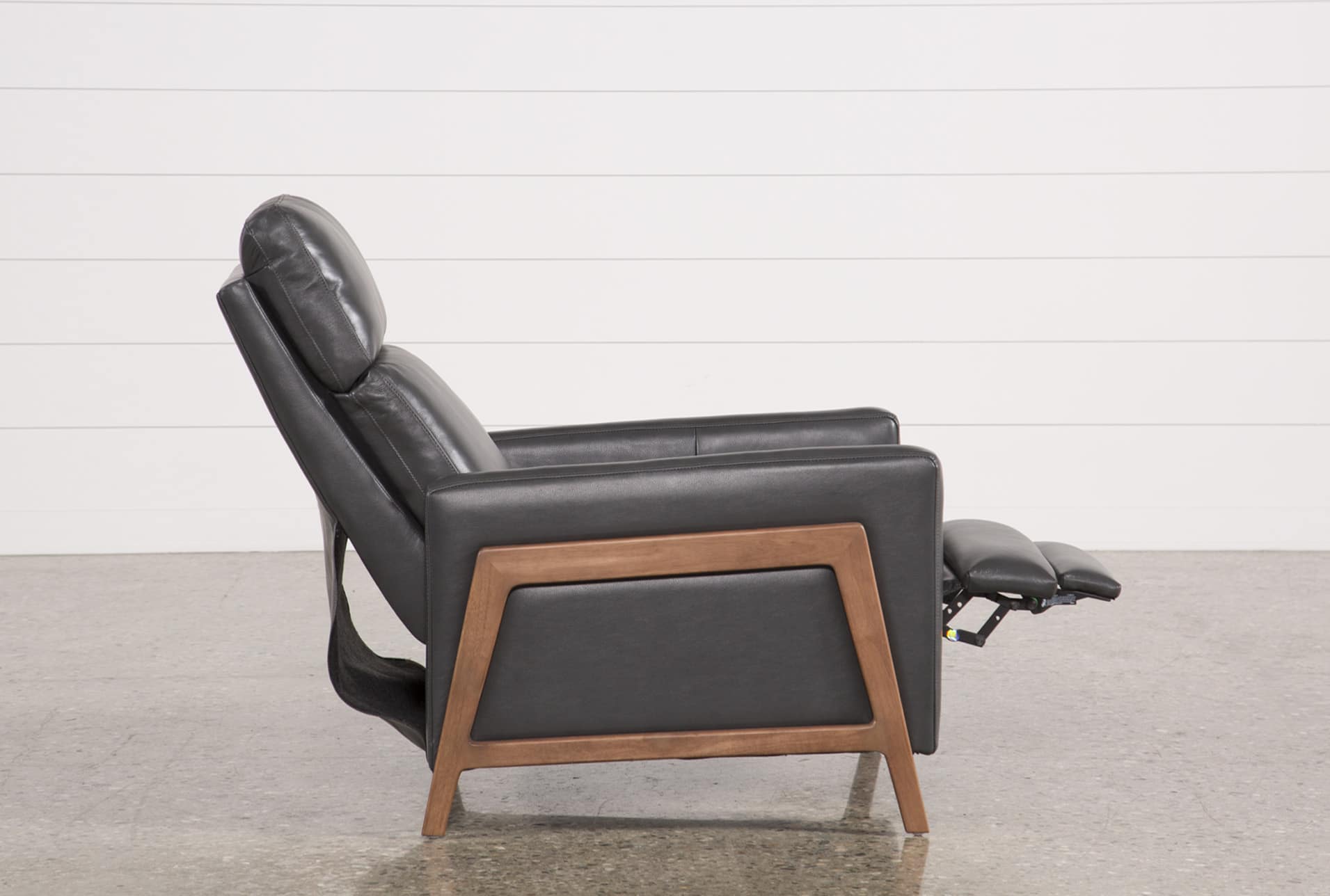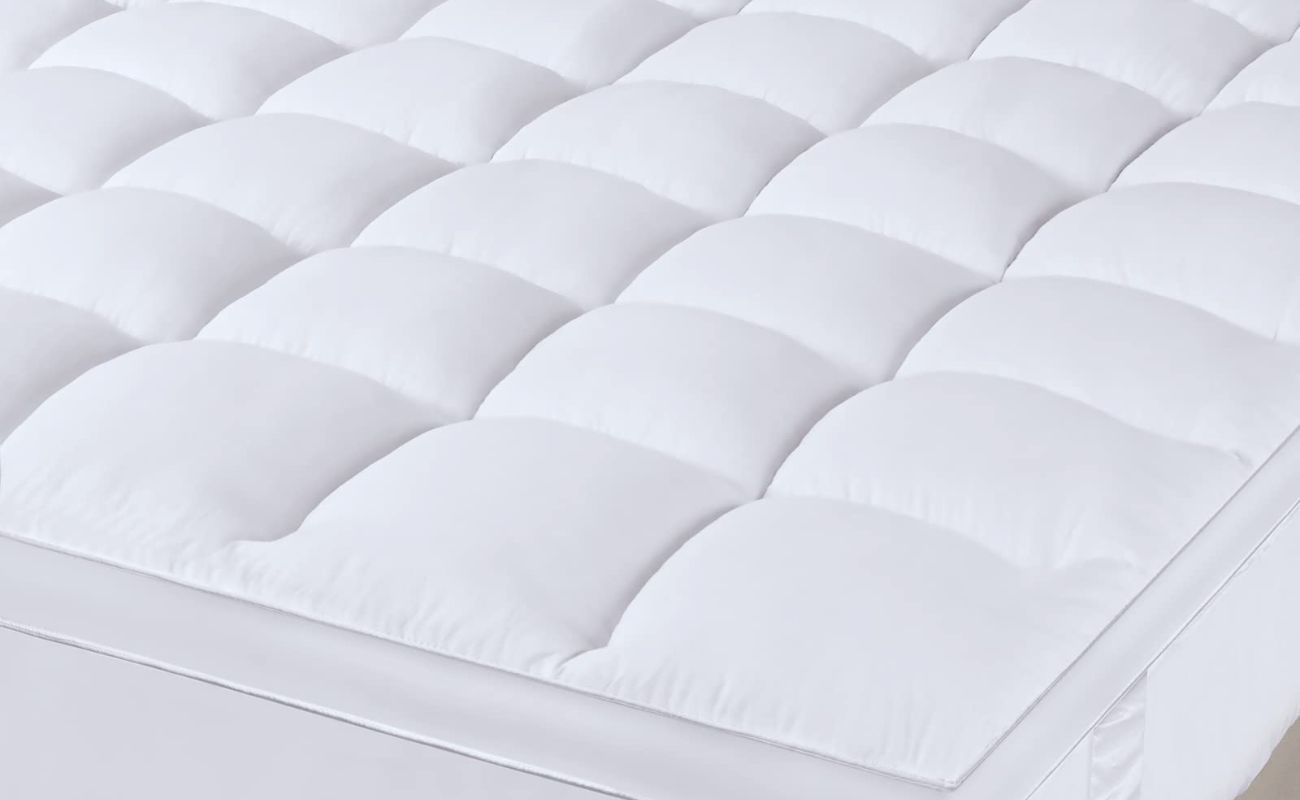Home>Furniture>Bedroom Furniture>How To Relieve Sciatica Pain In Bed


Bedroom Furniture
How To Relieve Sciatica Pain In Bed
Modified: January 18, 2024
Learn effective methods to relieve sciatica pain in bed with proper bedroom furniture and improve your sleep and overall well-being.
(Many of the links in this article redirect to a specific reviewed product. Your purchase of these products through affiliate links helps to generate commission for Storables.com, at no extra cost. Learn more)
Introduction
Welcome to our comprehensive guide on how to relieve sciatica pain in bed. If you’re one of the millions of people who suffer from sciatica, you know just how debilitating and disruptive the pain can be. The good news is that there are steps you can take to alleviate your discomfort and get a better night’s sleep.
Sciatica is a condition characterized by pain that radiates along the path of the sciatic nerve, which runs from the lower back down through the hips, buttocks, and legs. The pain can range from a mild ache to sharp, excruciating sensations that make it difficult to engage in everyday activities, including sleeping.
During sleep, the body is meant to heal and rejuvenate, but for sciatica sufferers, the pain can disrupt this crucial restorative process. Finding the right strategies and optimizing your sleeping environment are essential to managing this condition.
In this guide, we will explore the importance of proper bedding and how it can help alleviate sciatic pain. We will discuss the role of mattresses and pillows in supporting your body, as well as the optimal sleep positions for maximum relief. Additionally, we will explore the benefits of heat therapy, pre-bed stretching exercises, supportive props, and pain medication management.
By implementing these tips and techniques, you can create a bedroom environment that promotes comfort, reduces pain, and allows you to get the restful sleep you deserve. So let’s dive in and discover how you can find relief from sciatica pain in bed.
Key Takeaways:
- Proper bedding, including a supportive mattress and pillow, is essential for relieving sciatica pain in bed by providing alignment, cushioning, and support to reduce pressure on the sciatic nerve.
- Utilizing heat therapy, pre-bed stretching exercises, and supportive props can enhance comfort, promote relaxation, and alleviate sciatica pain, contributing to a better night’s sleep.
Read more: What Is The Best Bed For Back Pain
Understanding Sciatica Pain
Before we delve into ways to relieve sciatica pain in bed, it’s important to have a basic understanding of the condition itself. Sciatica occurs when the sciatic nerve, the longest nerve in the body, becomes compressed or irritated.
The most common cause of sciatica is a herniated or bulging disc in the spine. When the disc puts pressure on the nerve, it can result in pain, numbness, tingling, or weakness that radiates from the lower back down through the buttocks and into the legs.
In addition to disc problems, other factors that can contribute to sciatica pain include spinal stenosis, degenerative disc disease, spondylolisthesis, muscle spasms, and even pregnancy.
The symptoms of sciatica can vary from person to person, but commonly include:
- Sharp, shooting pain in the lower back, buttocks, and legs
- Numbness or tingling sensation in the affected area
- Weakening of the leg muscles
- Difficulty walking or standing for long periods
Understanding the underlying cause of your sciatica pain is crucial for effective treatment. Consulting with a healthcare professional, such as a doctor or physical therapist, can help diagnose the specific cause and develop a tailored plan for managing your symptoms.
It is important to note that while these strategies can provide relief in bed, they are not intended to replace medical advice. Always consult with a healthcare professional before implementing any new treatments or techniques.
Importance of Proper Bedding
When it comes to relieving sciatica pain in bed, the right bedding can make all the difference. Proper bedding provides support, alignment, and cushioning for your body, helping to alleviate pressure on the sciatic nerve and reduce pain. Here’s why it’s important:
1. Support
A supportive mattress is essential for maintaining a healthy spine and reducing sciatica pain. The mattress should evenly distribute your body weight, ensuring that no single area is bearing too much pressure. Look for a medium-firm to firm mattress that offers adequate support for your back and hips.
2. Alignment
Proper alignment of the spine is crucial for relieving sciatica pain. A mattress that promotes neutral spinal alignment can help reduce pressure on the sciatic nerve. It should keep your spine in a straight line, supporting the natural curves of your back. Aligning your neck and hips is equally important, which we will discuss further when we talk about pillow selection.
Read more: How To Sit In A Recliner With Sciatica
3. Cushioning
A mattress that provides sufficient cushioning can help relieve pressure on sensitive areas and reduce pain. Look for a mattress with adequate padding in the hip and shoulder areas, as these are common pressure points for sciatica sufferers. Memory foam or hybrid mattresses are often recommended for their contouring and pressure-relieving properties.
4. Durability
Choosing a durable mattress and pillow is essential, especially if you are a chronic sciatica sufferer or expect to use them for an extended period. A high-quality mattress and pillow will maintain their shape and support over time, providing consistent relief and comfort.
Besides the mattress, the pillow you choose can also significantly impact your sleep quality and sciatica pain. Let’s move on to the next section to explore how to choose the right pillow for your needs.
Choosing the Right Mattress
When it comes to selecting a mattress to relieve sciatica pain, there are a few factors to consider. Let’s take a look at what you should keep in mind:
1. Support
As mentioned earlier, a supportive mattress is essential for maintaining proper spinal alignment and reducing pressure on the sciatic nerve. Look for a mattress that offers medium-firm to firm support to ensure that your body is properly supported throughout the night.
Read more: What Helps Relieve Pepper Spray
2. Comfort
While support is crucial, it’s equally important to choose a mattress that feels comfortable to you. Comfort is subjective, so it’s important to try out different mattresses to find the one that suits your preferences. Consider factors such as the level of cushioning and the material of the mattress that feels most comfortable to you.
3. Material
The type of material used in the mattress can have a significant impact on its comfort and support levels. Here are a few popular mattress materials and their benefits:
- Memory Foam: Memory foam mattresses contour to your body, providing excellent pressure relief and support.
- Innerspring: Innerspring mattresses offer good support and airflow, making them a popular choice for those who prefer a more traditional feel.
- Latex: Latex mattresses provide a responsive and supportive feel. They are known for their durability and natural hypoallergenic properties.
- Hybrid: Hybrid mattresses combine the benefits of different materials, such as memory foam and innerspring, to provide both comfort and support.
4. Motion Transfer
If you sleep with a partner, consider a mattress that minimizes motion transfer. This means that when your partner moves or gets out of bed, you won’t be disturbed by their movements. This can be particularly important if you have sciatica, as any unnecessary jostling can exacerbate your pain.
5. Trial Period and Warranty
Many mattress companies offer trial periods, allowing you to sleep on the mattress and determine if it’s the right fit for you. Look for a mattress with a generous trial period, as it can take a few weeks to determine if the mattress is truly providing relief for your sciatica pain. Additionally, consider the warranty offered by the manufacturer to ensure that your investment is protected.
Remember, everyone’s preferences and needs are different when it comes to mattresses. Take your time to research and try different options to find the one that works best for you in alleviating sciatica pain. Next, let’s move on to pillow selection, which is just as important for a good night’s sleep.
Read more: What Type Of Mattress Is Best For Sciatica
Optimal Pillow Selection
Choosing the right pillow is essential for promoting proper spinal alignment and relieving sciatica pain. Here are a few factors to consider when selecting an optimal pillow:
1. Thickness and Firmness
The thickness and firmness of the pillow should complement your sleeping style and provide support for your head and neck. Back sleepers generally benefit from a medium-firm pillow, while side sleepers may require a higher loft and firmer pillow to keep their neck aligned with their spine. Stomach sleepers should opt for a softer and flatter pillow to prevent excessive strain on the neck.
2. Alignment
The pillow should help maintain proper alignment of your neck with your spine. It should fill the gap between your head and shoulders, ensuring there is no strain or curvature of the cervical spine that can aggravate sciatica pain. Choose a pillow that contours to the shape of your head and neck, providing adequate support in all sleeping positions.
3. Material
The material of the pillow can greatly impact its comfort and support properties. Here are a few common pillow materials and their benefits:
- Memory Foam: Memory foam pillows conform to the shape of your head and neck, providing excellent support and pressure relief. They are hypoallergenic and can help alleviate discomfort.
- Latex: Latex pillows are known for their resilience and support. They provide a firm yet cushioning feel and are suitable for people with allergies.
- Down/Feather: Down or feather pillows offer a soft and luxurious feel. They can be molded to your preferred shape, but they may not provide as much support as other materials.
- Microbeads or Buckwheat: Microbead or buckwheat pillows allow for customizable support as the filling can be adjusted to your preferred thickness. They also provide good airflow, keeping you cool throughout the night.
4. Allergies
If you have allergies, consider hypoallergenic pillows that are resistant to dust mites, mold, and other allergens. This can help alleviate any allergic reactions that may exacerbate your sciatica pain.
5. Pillow Maintenance
Consider the ease of pillow maintenance, including whether it is machine washable or requires spot cleaning. Keeping your pillow clean and fresh can contribute to your overall comfort and hygiene.
Remember, just like with mattresses, pillow preference varies from person to person. Consider your individual needs and preferences, and don’t hesitate to try different pillows until you find the one that provides optimal support and comfort for your sciatica pain relief.
Now that we have discussed the importance of proper bedding, including mattress and pillow selection, let’s move on to sleep positions that can help alleviate sciatica pain in bed.
Sleep Position for Sciatica Relief
Choosing the right sleep position can play a significant role in relieving sciatica pain while you sleep. Here are three sleep positions that can help alleviate discomfort:
1. Back Sleeping
Sleeping on your back can be beneficial for sciatica relief as it allows for proper spinal alignment. Follow these tips for optimal back sleeping:
- Use a medium-firm mattress and a supportive pillow that keeps your head and neck in line with your spine.
- Consider placing a small pillow or rolled-up towel under your knees to help maintain the natural curve of your lower back.
- Avoid using a pillow that is too thick, as it can strain your neck.
Read more: Where To Place Pillows For Back Pain
2. Side Sleeping
Side sleeping can also be helpful in relieving sciatica pain. Follow these recommendations for proper side sleeping:
- Select a contoured pillow that supports your head, neck, and shoulder alignment.
- Place a pillow between your knees to keep your hips and spine aligned, reducing pressure on the sciatic nerve.
- Consider hugging a body pillow or placing one between your arms for additional comfort and support.
3. Fetal Position
The fetal position can provide relief by opening up the space between the vertebrae and reducing pressure on the spine. Follow these guidelines for proper fetal position sleeping:
- Lie on your side and draw your knees toward your chest.
- Use a medium-firm pillow to support your head and neck.
- Place a pillow between your knees to maintain proper spinal alignment.
Remember, finding the right sleep position for sciatica relief may require some trial and error. Pay attention to how your body feels in different positions and make adjustments accordingly. Additionally, it’s essential to listen to your body and adapt to the sleep position that provides the most comfort for your individual condition.
Next, let’s explore the benefits of utilizing heat therapy for sciatica pain relief in bed.
Utilizing Heat Therapy
Heat therapy is a simple and effective way to reduce sciatica pain and relax the muscles in the affected area. Applying heat to the lower back, buttocks, or leg can help increase blood flow, reduce inflammation, and alleviate stiffness. Here’s how you can effectively utilize heat therapy for sciatica relief:
1. Hot Packs or Heating Pads
Apply a hot pack or heating pad to the painful area for 15-20 minutes. Make sure to wrap the heating pad in a thin cloth to prevent direct skin contact and avoid burning yourself. You can repeat this process several times a day, as needed, to help relax the muscles and ease the pain.
Read more: How To Sit In An Office Chair With Back Pain
2. Warm Baths or Showers
Soaking in a warm bath or taking a warm shower can provide overall relaxation and pain relief. The warm water helps to relax muscles and improve circulation. Spend 20-30 minutes in the bath or shower, allowing the heat to penetrate the affected area.
3. Heat Wraps
Consider using heat wraps specifically designed for sciatica pain relief. These wraps are easy to wear and provide targeted heat therapy to the affected area. They are convenient for use during sleep, as they can be worn without interfering with your movements in bed.
4. Warm Compresses
If you don’t have access to a hot pack or heating pad, you can create a warm compress by soaking a clean towel in warm water. Wring out the excess water and apply the warm compress to the painful area for 15-20 minutes.
It’s important to note that heat therapy may not be suitable for everyone. If you have an acute injury, open wound, or a condition that worsens with heat, such as inflammatory arthritis, consult with a healthcare professional before using heat therapy.
Incorporating heat therapy into your bedtime routine can provide soothing relief for your sciatica pain. However, it’s always important to address the underlying cause of your pain and seek proper medical advice for long-term management.
Next, let’s explore the benefits of pre-bed stretching exercises that can help prepare your body for a restful night’s sleep.
Stretching Exercises before Bed
Engaging in gentle stretching exercises before bed can help relax tight muscles, improve flexibility, and alleviate sciatica pain. Here are a few stretching exercises that you can incorporate into your bedtime routine:
Read more: What Is A Good Mattress For Back Pain
1. Knee-to-Chest Stretch
Lie on your back with your knees bent and feet flat on the bed. Slowly bring one knee toward your chest, using your hands to gently pull it closer. Hold for 20-30 seconds and then release. Repeat with the other leg. This stretch helps to elongate the muscles in your lower back and buttocks, providing relief from sciatica pain.
2. Cat-Cow Stretch
Begin on all fours with your hands directly under your shoulders and your knees under your hips. Slowly round your back upwards towards the ceiling, tucking your chin to your chest like a cat. Hold for a few seconds and then arch your back downwards, lifting your chest and gaze towards the ceiling. Repeat this gentle flowing motion for a few cycles, focusing on synchronizing your breath with the movement. The cat-cow stretch helps to increase flexibility and reduce tension in the spine.
3. Figure-Four Stretch
Lie on your back with your knees bent and feet flat on the bed. Cross your right ankle over your left knee, creating a figure-four shape. Use your hands to gently pull your left leg towards your chest, feeling a stretch in your right hip and glute area. Hold for 20-30 seconds and then switch sides. This stretch targets the piriformis muscle, which can often contribute to sciatica pain when tight or inflamed.
4. Supine Hamstring Stretch
Lie on your back with one leg extended straight out on the bed. Lift your other leg towards the ceiling and gently hold onto the back of your thigh or calf. Slowly straighten your leg, feeling a stretch in your hamstring. Hold for 20-30 seconds and then switch sides. This stretch helps to release tension in the hamstrings, which can contribute to lower back and sciatic nerve pain.
Read more: What Is The Best Mattress For Hip Pain
5. Gentle Spinal Twist
Lie on your back with your knees bent and feet flat on the bed. Extend your arms out to the sides, forming a T-shape. Slowly lower both knees to one side, keeping your shoulders glued to the bed. Hold for 20-30 seconds and then switch to the other side. This gentle spinal twist helps to alleviate tension in the lower back and promotes relaxation before sleep.
Remember to listen to your body and never push yourself into pain or discomfort during stretching exercises. These exercises should be performed in a controlled and gentle manner to promote relaxation and relieve sciatic pain. If you experience any increased pain or discomfort, it’s best to consult with a healthcare professional.
Next, let’s explore how using supportive props in bed can enhance your comfort and promote better sleep.
Using Supportive Props in Bed
Supportive props can be highly beneficial for relieving sciatica pain and providing added comfort in bed. These props help optimize your sleeping position and provide additional support to the affected areas. Here are a few supportive props that you can use:
1. Body Pillow
A body pillow can be a valuable tool for providing support and alignment while sleeping. Place the body pillow alongside your body, from your head to your feet, and position yourself against it. This helps maintain proper spinal alignment and reduces pressure on the sciatic nerve. The body pillow also provides a sense of comfort and security during sleep.
2. Wedge Pillow
A wedge pillow can be placed under your knees or lower back to help relieve pressure and reduce pain. If you sleep on your back, place the wedge pillow under your knees to elevate them slightly, which takes strain off the lower back. If you prefer to sleep on your side, place the wedge pillow under your waist and hips to help align your spine properly.
Read more: How To Make Poppy Seed Tea For Pain
3. Lumbar Roll
A lumbar roll is a small cylindrical pillow that provides extra support to the lower back. Place it behind your lower back or in the small of your back while sleeping to help maintain the natural curve of your spine. This helps ease pressure on the sciatic nerve and promotes better posture during sleep.
4. Leg Pillow
A leg pillow can be positioned between your legs or knees while sleeping on your side. This helps align your hips, pelvis, and spine, reducing strain on the lower back and relieving sciatica pain. The leg pillow provides support to the legs and helps to prevent them from crossing over, which can lead to misalignment and discomfort.
5. Neck Pillow
If you experience neck pain in addition to sciatica, using a supportive neck pillow can be beneficial. Look for a pillow that contours to the shape of your neck and provides adequate support. This helps maintain proper alignment of the cervical spine and reduces pressure on the nerves in the neck and upper back.
Using supportive props in bed can make a significant difference when it comes to alleviating sciatica pain and promoting better sleep. Experiment with different props to find the ones that provide optimal support and comfort for your specific needs.
Now, let’s talk about managing pain medication as part of your sciatica pain relief strategy.
Managing Pain Medication
Pain medication can be helpful in managing sciatica pain, but it’s important to approach it carefully and under the guidance of a healthcare professional. Here are some tips for effectively managing pain medication:
1. Consult with a Healthcare Professional
Before starting or changing any pain medication regimen, it’s crucial to consult with a healthcare professional. They can evaluate your condition, determine the most appropriate medication, and provide guidance on dosage and potential side effects.
2. Follow Prescribed Dosages
Always comply with the prescribed dosage instructions provided by your healthcare professional. Taking more medication than recommended can lead to harmful side effects or dependency, while taking less may not provide adequate pain relief. If you feel that the prescribed medication is not effectively managing your pain, consult with your healthcare professional before making any changes.
3. Be Aware of Potential Side Effects
Every medication comes with potential side effects. Be sure to familiarize yourself with these side effects and monitor your body’s response. If you experience any severe or concerning side effects, consult with your healthcare professional immediately.
4. Combine Medication with Other Strategies
Pain medication may provide temporary relief, but it’s important to combine it with other strategies for long-term management. Incorporate activities such as stretching exercises, heat therapy, proper bedding, and supportive props into your routine to enhance the effectiveness of pain medication and promote overall wellness.
Read more: Hip Pain When Going Up Stairs
5. Regularly Review Medication Needs
Keep in touch with your healthcare professional to regularly assess the need for pain medication. As your condition improves, they may recommend tapering off or adjusting the dosage. It’s important to communicate any changes in your symptoms or overall well-being to ensure the most appropriate medication management plan.
Remember, pain medication should be used as part of a comprehensive approach to managing sciatica pain, and it’s essential to prioritize your overall health and well-being. Listen to your body, communicate with your healthcare professional, and work together to find the most effective and sustainable pain management plan for you.
As we conclude this guide, we hope that the tips and strategies provided will help you find relief from sciatica pain, enhance your sleep quality, and improve your overall well-being. Remember, each person’s experience with sciatica is unique, so it’s crucial to find what works best for you. By creating a comfortable sleeping environment, practicing stretching exercises, and utilizing supportive props, you can pave the way toward a restful night’s sleep and a healthier, pain-free life.
Conclusion
Dealing with sciatica pain can be challenging, especially when it affects your ability to sleep and find comfort in bed. However, with the right strategies and adjustments to your sleeping environment, you can alleviate sciatica pain and improve the quality of your sleep. Here is a recap of the key points discussed in this comprehensive guide:
– Understanding the nature of sciatica pain and its common symptoms is essential for effective management.
– Proper bedding plays a crucial role in providing support, alignment, and cushioning for your body, reducing pressure on the sciatic nerve.
– Choosing the right mattress that offers optimal support and comfort for your specific needs is vital.
– Selecting a pillow that promotes proper spinal alignment and suits your preferred sleep position can help relieve sciatica pain.
– Sleep position plays a significant role in managing sciatica pain. Back sleeping, side sleeping with a knee pillow, or sleeping in the fetal position can all provide relief.
– Utilizing heat therapy through hot packs or baths can relax muscles and reduce inflammation.
– Engaging in pre-bed stretching exercises can help relax tight muscles and improve flexibility.
– Supportive props such as body pillows, wedge pillows, and lumbar rolls can enhance alignment and reduce pressure on the sciatic nerve.
– Pain medication can be an effective short-term solution when used under the guidance of a healthcare professional.
Remember, finding relief from sciatica pain may require a combination of these strategies tailored to your specific needs. It’s important to consult with a healthcare professional for proper diagnosis, guidance, and personalized treatment plans.
By implementing the tips and techniques provided in this guide, you can create a comfortable and supportive sleep environment, ease sciatica pain, and achieve a better night’s sleep. Prioritize your well-being, listen to your body, and be patient with yourself as you navigate your journey toward managing sciatica pain in bed.
We hope this guide has been informative and empowering. May you find comfort and relief in your sleep, and may each morning bring you renewed energy and vitality to face the day ahead. Sleep well, dream big, and live pain-free!
Frequently Asked Questions about How To Relieve Sciatica Pain In Bed
Was this page helpful?
At Storables.com, we guarantee accurate and reliable information. Our content, validated by Expert Board Contributors, is crafted following stringent Editorial Policies. We're committed to providing you with well-researched, expert-backed insights for all your informational needs.





0 thoughts on “How To Relieve Sciatica Pain In Bed”